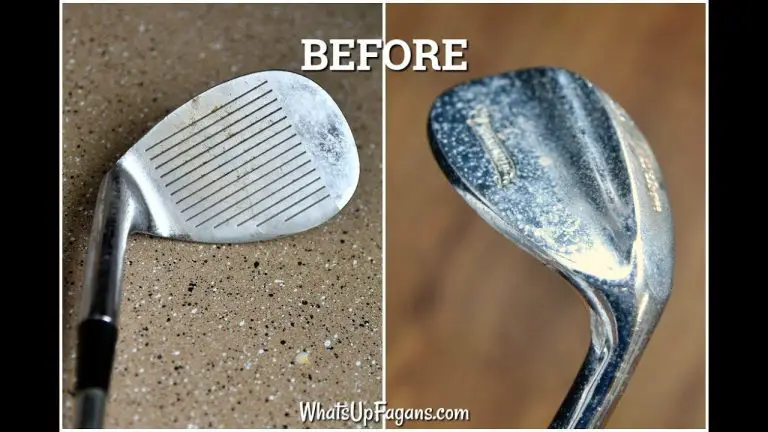How Does A Fuel Pump Work On A Golf Cart

Have you ever wondered how a golf cart keeps its engine running smoothly on the golf course? Behind the scenes, a crucial component called the fuel pump plays a vital role in delivering the necessary fuel to power the engine. Understanding how a fuel pump works on a golf cart is key to ensuring optimal performance and efficiency.
In this informative guide, we will take a deep dive into the mechanics of a fuel pump and unravel the intricate processes that enable fuel delivery in a golf cart. From the essential components that make up the fuel pump to the step-by-step operation and the challenges it overcomes, we will explore every aspect of this critical system.
By the end of this guide, you will have a comprehensive understanding of how a fuel pump works on a golf cart, empowering you with knowledge to troubleshoot issues, perform maintenance tasks, and make informed decisions to optimize fuel delivery.
So, let’s embark on a journey to demystify the inner workings of a fuel pump on a golf cart and discover the mechanisms that keep your golf cart running smoothly from tee to green.

Understanding the Fuel System in a Golf Cart
In order to grasp the inner workings of a fuel pump, it’s important to have a basic understanding of the fuel system in a golf cart. The fuel system consists of several components that work together to supply fuel to the engine efficiently. These components include the fuel tank, fuel lines, fuel filter, carburetor (or fuel injectors), and, of course, the fuel pump.
The fuel pump plays a crucial role in the fuel system, as it is responsible for drawing fuel from the tank and delivering it to the engine at the correct pressure and flow rate. It ensures that the engine receives a consistent supply of fuel for combustion, enabling the golf cart to run smoothly.
The Main Components of a Fuel Pump
A fuel pump in a golf cart typically consists of several key components that work together to perform the fuel delivery process. Let’s explore these components and their functions:
1. Fuel Pump Housing
The fuel pump housing encloses the internal components of the fuel pump and provides protection and support. It is usually made of durable materials such as aluminum or plastic.
2. Diaphragm
The diaphragm is a flexible membrane that moves up and down within the fuel pump housing. It is responsible for creating suction and pressure to draw fuel from the tank and deliver it to the engine.
3. Inlet and Outlet Valves
The fuel pump has inlet and outlet valves that control the flow of fuel. The inlet valve opens to allow fuel to enter the pump from the fuel tank, while the outlet valve opens to release fuel to the engine. These valves ensure that fuel flows in the correct direction and prevent backflow.
4. Mechanical Lever or Actuator
In some golf cart fuel pumps, a mechanical lever or actuator is present to drive the diaphragm’s movement. This lever is connected to the engine’s mechanical components, causing it to move in sync with the engine’s cycles.
5. Electrical Connections
In electric fuel pumps, there are electrical connections that provide power to the pump. These connections are typically connected to the golf cart’s electrical system, allowing the fuel pump to operate when the ignition is turned on.
Fuel Pump Operation: Step by Step
Now that we understand the main components of a fuel pump, let’s explore how it operates in a golf cart. The fuel pump operation can be broken down into several key steps:
- Fuel Suction: When the golf cart’s engine is started or the ignition is turned on, the fuel pump begins its operation. The diaphragm moves downwards, creating a suction effect that draws fuel from the tank through the inlet valve.
- Fuel Pressurization: As the diaphragm moves back up, it compresses the fuel and increases the pressure within the fuel pump. The outlet valve remains closed during this stage to prevent fuel from flowing back into the pump.
- Fuel Delivery to the Engine: When the pressure reaches a certain level, the outlet valve opens, allowing the pressurized fuel to flow towards the engine. The fuel is delivered to the carburetor or fuel injectors, where it mixes with air to create the combustible mixture necessary for the engine’s operation. This fuel delivery process ensures a steady and controlled supply of fuel to the engine, enabling efficient combustion and optimal performance of the golf cart.
- Regulating Fuel Flow: The fuel pump continuously adjusts its operation to maintain the proper fuel pressure and flow rate. It responds to the demands of the engine, increasing or decreasing the fuel delivery based on factors such as engine speed, throttle position, and load. This regulation ensures that the engine receives the appropriate amount of fuel for different driving conditions.
- Fuel Recirculation (if applicable): Some golf carts may have a fuel recirculation system that returns excess fuel back to the fuel tank. This system helps maintain consistent fuel temperature and reduces the likelihood of vapor lock, particularly in warmer climates or during extended periods of operation.
Fuel Pump Troubleshooting and Maintenance
While fuel pumps are designed to be durable, they may encounter issues over time. Understanding common fuel pump problems and implementing proper maintenance practices can help ensure the longevity and optimal performance of the fuel pump. Here are some troubleshooting and maintenance tips:
- Check Fuel Filters: Regularly inspect and replace fuel filters as recommended by the manufacturer. Clogged or dirty fuel filters can restrict fuel flow and put additional strain on the fuel pump.
- Monitor Fuel Pressure: Use a fuel pressure gauge to monitor the fuel pressure delivered by the pump. If the pressure is consistently too low or too high, it may indicate a problem with the fuel pump or other components of the fuel system.
- Keep the Fuel System Clean: Contaminants, such as dirt or debris, can enter the fuel tank and potentially clog the fuel pump or fuel injectors. It’s important to keep the fuel system clean and avoid using low-quality or contaminated fuel.
- Inspect Electrical Connections: For electric fuel pumps, periodically inspect the electrical connections to ensure they are secure and free from corrosion. Faulty connections can result in a loss of power to the pump and affect its performance.
- Follow Manufacturer’s Maintenance Recommendations: Refer to the golf cart’s owner manual for specific maintenance recommendations regarding the fuel pump. This may include periodic inspections, cleaning, or lubrication of certain components.
If you encounter persistent fuel delivery issues or suspect a problem with the fuel pump, it is recommended to consult a qualified technician or contact the golf cart manufacturer for further assistance.
Upgrading and Replacing a Golf Cart Fuel Pump
In some cases, upgrading or replacing the fuel pump in a golf cart may be necessary or desired. Upgrading to a higher-performance fuel pump can improve fuel delivery, optimize engine performance, or accommodate modifications to the golf cart. Here are some considerations for upgrading or replacing a golf cart fuel pump:
- Compatibility: Ensure that the new fuel pump is compatible with your golf cart’s make, model, and engine specifications. Refer to the manufacturer’s guidelines or seek professional advice to select the appropriate fuel pump.
- Performance: Research and select a fuel pump that matches your desired performance goals. High-performance fuel pumps may offer increased flow rates, enhanced pressure regulation, or improved reliability.
- Installation: Follow the manufacturer’s instructions for proper installation of the new fuel pump. It is crucial to correctly connect electrical wiring, secure fuel lines, and ensure proper alignment and sealing.
- Safety Considerations: When working with fuel systems, exercise caution and follow safety protocols. Take necessary precautions to prevent fuel leakage, ignition, or other hazards. If unsure, consult a professional for installation or seek expert guidance.
Remember to consult the golf cart manufacturer, reputable dealers, or experienced technicians for guidance on suitable fuel pump options and installation procedures.
Fuel Efficiency and Performance Enhancements
The performance of a golf cart’s fuel pump can have a significant impact on fuel efficiency and overall performance. While the fuel pump itself is primarily responsible for delivering fuel, there are other factors that can affect fuel efficiency and enhance performance. Consider the following:
- Proper Maintenance: Regularly maintaining the fuel system, including the fuel pump, can help ensure optimal fuel efficiency. This includes keeping the fuel tank clean, replacing fuel filters, and inspecting for any leaks or issues that may affect fuel delivery.
- Fuel Quality: The quality of fuel used in a golf cart can impact its performance and fuel efficiency. It is recommended to use clean, high-quality fuel that meets the manufacturer’s specifications. Avoid using stale or contaminated fuel, as it can lead to engine problems and reduced efficiency.
- Weight Reduction: Removing unnecessary weight from the golf cart can improve fuel efficiency and performance. Consider removing any excess items or accessories that are not required for your round of golf.
- Tire Pressure: Maintaining proper tire pressure is crucial for optimal performance and fuel efficiency. Underinflated tires can create more rolling resistance, requiring the engine to work harder and consume more fuel. Regularly check and maintain the recommended tire pressure for your golf cart.
- Aerodynamics: Golf cart accessories such as windshields, roof racks, or storage containers can create aerodynamic drag, which can negatively impact fuel efficiency. Consider removing or minimizing these accessories when not needed to improve the cart’s aerodynamics.
- Driving Habits: Smooth and steady driving can contribute to better fuel efficiency. Avoid aggressive acceleration, excessive idling, or unnecessary braking. Plan your routes efficiently to minimize unnecessary detours or backtracking.
By incorporating these fuel-efficient practices and considering performance-enhancing measures, you can optimize your golf cart’s fuel efficiency and overall performance.
Conclusion
Understanding how a fuel pump works on a golf cart is essential for maintaining optimal fuel delivery and ensuring the smooth operation of the engine. From the main components of a fuel pump to the step-by-step fuel delivery process, troubleshooting, and maintenance tips, this guide has provided a comprehensive overview of fuel pump mechanics in golf carts.
By implementing proper maintenance practices, monitoring fuel pressure, and addressing any issues promptly, you can extend the lifespan of the fuel pump and optimize fuel efficiency. Additionally, considering upgrades or replacements when necessary can further enhance performance and accommodate specific needs or modifications.
Remember to consult the golf cart manufacturer’s guidelines and seek professional assistance if you encounter persistent fuel system issues or require technical expertise. By taking care of your golf cart’s fuel system, you can enjoy smooth rides, efficient fuel consumption, and a better overall golfing experience.





